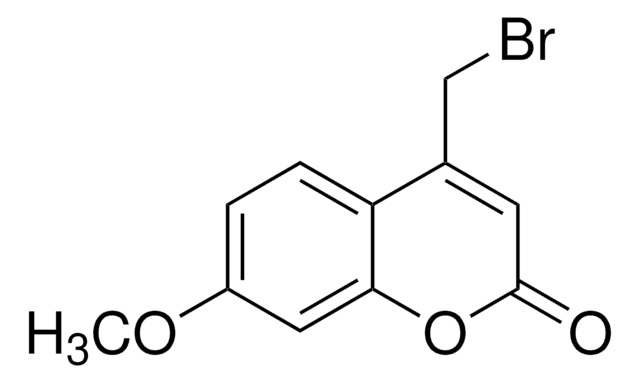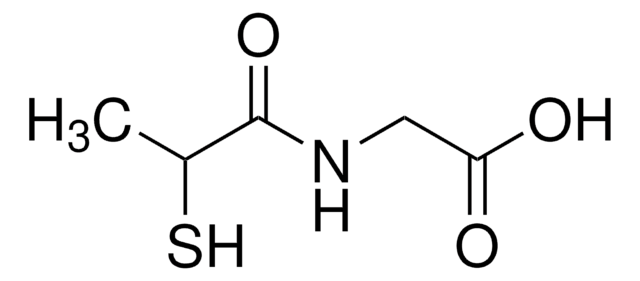F4383
7-Fluorobenzofurazan-4-sulfonic acid ammonium salt
≥98%
Synonyme(s) :
4-Fluoro-7-sulfobenzofurazan ammonium salt, 7-Fluorobenz-2,1,3-oxadiazole-4-sulfonic acid ammonium salt, Ammonium 7-fluorobenzofurazan-4-sulfonate, SBD-F
About This Item
Produits recommandés
Pureté
≥98%
Conditions de stockage
protect from light
Fluorescence
λex 380 nm; λem 515 nm
Température de stockage
−20°C
Chaîne SMILES
N.OS(=O)(=O)c1ccc(F)c2nonc12
InChI
1S/C6H3FN2O4S.H3N/c7-3-1-2-4(14(10,11)12)6-5(3)8-13-9-6;/h1-2H,(H,10,11,12);1H3
Clé InChI
JXLHNMVSKXFWAO-UHFFFAOYSA-N
Vous recherchez des produits similaires ? Visite Guide de comparaison des produits
Description générale
Application
Code de la classe de stockage
11 - Combustible Solids
Classe de danger pour l'eau (WGK)
WGK 3
Point d'éclair (°F)
Not applicable
Point d'éclair (°C)
Not applicable
Équipement de protection individuelle
Eyeshields, Gloves, type N95 (US)
Certificats d'analyse (COA)
Recherchez un Certificats d'analyse (COA) en saisissant le numéro de lot du produit. Les numéros de lot figurent sur l'étiquette du produit après les mots "Lot" ou "Batch".
Déjà en possession de ce produit ?
Retrouvez la documentation relative aux produits que vous avez récemment achetés dans la Bibliothèque de documents.
Les clients ont également consulté
Notre équipe de scientifiques dispose d'une expérience dans tous les secteurs de la recherche, notamment en sciences de la vie, science des matériaux, synthèse chimique, chromatographie, analyse et dans de nombreux autres domaines..
Contacter notre Service technique












